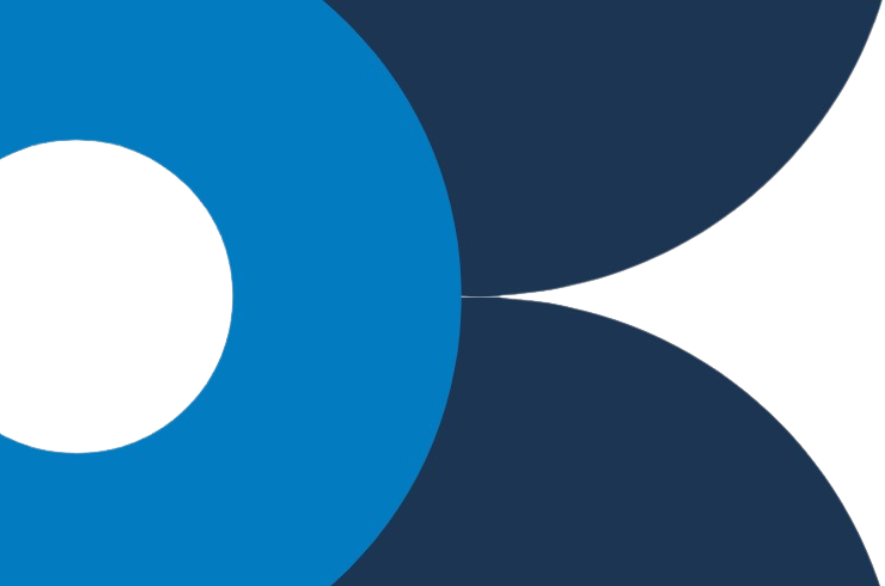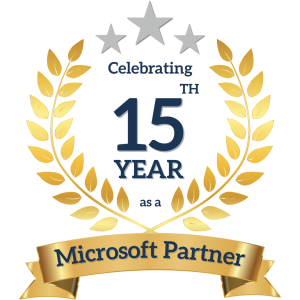Fabric in Action: How Microsoft Fabric Unifies Data for Real-Time Business Decisions
Overview
In today’s fast-moving digital economy, the ability to make real-time, data-driven decisions defines a company’s competitiveness. Yet for many organizations, disconnected systems and siloed data make that nearly impossible. Microsoft Fabric addresses this challenge by unifying analytics, data science, engineering, real-time intelligence and Power BI into a single, integrated SaaS platform. It simplifies data access, eliminates duplication, and empowers every team, whether technical or non-technical, to act on insights faster and with greater confidence.
The Problem: Breaking Down Data Silos: The Hidden Barrier to Smarter Decisions
In most organizations, data is scattered across departments, tools, and cloud environments. Sales teams rely on CRM dashboards, operations use separate reporting tools, and marketing runs on platforms that don’t sync with the rest. The result is fragmented intelligence and misaligned decisions.
- Data silos: When teams can’t access the same data, collaboration breaks down. Insights stay stuck in one department. Strategy suffers because no one sees the full picture.
- Delayed decision-making: By the time reports are ready, the moment to act is gone. Teams react instead of leading. Momentum gets lost and opportunities slip away.
- Inconsistent reporting: Different tools, different metrics, different stories. Teams can’t align. Leadership questions the data. Decisions get second-guessed or delayed.
- High overhead for integration and governance: Connecting scattered systems takes time and money. IT gets bogged down in maintenance. Data security and compliance become harder to manage at scale.
Without a shared, real-time view of data, businesses struggle to act with agility and often miss key opportunities in a fast-moving market. To overcome this, organizations need more than just analytics; they need a unified foundation. That is exactly what Microsoft Fabric delivers.
The Solution: Microsoft Fabric as a Unified Data Platform
Microsoft Fabric brings together everything your business needs to manage and act on data, including analytics, reporting, preparation, and real-time intelligence, all within one connected platform. It is powered by OneLake, a single, secure data foundation that works seamlessly across departments, tools, and data sources. Each team, whether it’s data engineers running Spark jobs, analysts building dashboards, or operations teams monitoring live streams has access to a role-based interface tailored to their needs. By unifying workloads like Data Engineering, Real-Time Intelligence, and Power BI while maintaining purpose-built experiences, Fabric breaks down silos, simplifies workflows, and enables faster, smarter decisions without the hassle of switching between tools or duplicating data.
This unified experience is made possible by OneLake, Microsoft Fabric’s secure, centralized data foundation that eliminates silos and ensures consistent access across teams.
OneLake: Unified Storage with Zero Silos
No data movement. No duplication. OneLake gives every team access to the same real-time data, whether it lives in databases, files, or external sources like Azure Cosmos DB or Snowflake. Mirroring and shortcuts eliminate the need for complex pipelines. Governance is built in. So, policies, permissions and sensitivity labels are automatically applied across the board. With a single, secure foundation for all workloads, OneLake streamlines operations, simplifies compliance, and accelerates data availability across the organization. While OneLake ensures all data is unified and accessible, Fabric also makes it instantly usable. That’s where the Real-Time Hub steps in, turning live data streams into immediate, actionable insights.
Real-Time Hub: Instant Action on Live Data
Fabric makes streaming data actionable instantly. The Real-Time Hub connects to sources like Event Hubs, IoT, and Microsoft 365, allowing businesses to process and respond to live events without custom infrastructure. Alerts, dashboards, and workflows update in real time, helping teams detect anomalies, automate responses, and make time-sensitive decisions without delay. What used to require specialized tooling is now part of the everyday toolkit, which is ready for use by any team at any time. But accessing real-time data is just the beginning. With built-in Power BI and AI capabilities, Fabric transforms those insights into clear, actionable decisions without the need for complex tools or coding.
Power BI + AI Integration: From Insight to Action
Power BI in Fabric isn’t just for charts; it drives decisions. Connected natively to all data workloads, it gives business users one-click access to unified, governed insights. Copilot adds AI-powered automation: generate summaries, ask questions, build reports, all without writing a line of code. With predictive modeling, embedded intelligence, and a seamless experience across the Microsoft ecosystem, teams spend less time reporting and more time acting.
How Cloud 9 Infosystems Can Help
Cloud 9 Infosystems helps businesses unlock the full potential of Microsoft Fabric through tailored implementation, Power BI transformation, OneLake optimization, and real-time data enablement. We align your data strategy with business goals, build actionable dashboards with advanced modeling and Copilot integration, streamline governance across OneLake, and set up live data flows that trigger instant insights and actions. With Cloud 9, you gain more than just deployment support, measurable outcomes and a long-term data partner committed to your growth.
Frequently Asked Questions
1. What is Microsoft Fabric and how does it help with unified data management?
Microsoft Fabric is an end-to-end, SaaS-based data platform that brings together analytics, data engineering, data science, and Power BI into one ecosystem. It helps organizations eliminate data silos, streamline access, and make faster, real-time decisions through a unified data foundation called OneLake.
2. How does Microsoft Fabric improve real-time decision-making?
With its Real-Time Hub, Microsoft Fabric enables businesses to ingest and act on streaming data from sources like Azure Event Hubs, IoT, and Microsoft 365. This allows teams to detect anomalies, automate alerts, and make timely decisions based on live data.
3. What are the key components of Microsoft Fabric?
Fabric includes integrated workloads such as Data Engineering, Data Factory, Power BI, Real-Time Intelligence, Data Science, and a unified data lake called OneLake. These tools work together to simplify data management and accelerate insights.
4. Why is OneLake important in Microsoft Fabric?
OneLake is the unified data lake that serves as the backbone of Microsoft Fabric. It centralizes all organizational data, enforces consistent governance, and eliminates the need for duplication or complex pipelines by offering built-in mirroring and shortcuts.
5. Can Microsoft Fabric replace my existing data tools?
Yes, Microsoft Fabric is designed to integrate and consolidate multiple tools such as Azure Synapse, Power BI, and Data Factory. It reduces the need for multiple platforms by offering a single environment for data ingestion, analysis, and visualization.
6. How does Power BI work within Microsoft Fabric?
Power BI is natively integrated into Microsoft Fabric, providing users with seamless access to unified data. With Copilot, it adds AI-driven capabilities like auto-generated summaries, intelligent recommendations, and report automation.
7. Is Microsoft Fabric suitable for small and mid-sized businesses?
Yes, Microsoft Fabric’s SaaS model makes it scalable and accessible for businesses of all sizes. It removes infrastructure complexity and provides an intuitive interface for both technical and non-technical users.
8. How can Cloud 9 Infosystems help with Microsoft Fabric implementation?
Cloud 9 Infosystems offers end-to-end Microsoft Fabric services, including strategy, deployment, Power BI transformation, OneLake governance, and real-time data activation. We tailor solutions to your business needs and ensure measurable outcomes.
Recent Posts
Latest Blogs

Beyond Compliance: 5 Reasons the Financial Services Industry Is Thriving on Microsoft Azure
In the fast-evolving landscape of the Financial Services Industry FSI the wait and see approach to cloud adoption is officially over. From community banks to

Azure AI Foundry: Operationalizing Enterprise AI Agents at Scale
As enterprises move beyond AI experimentation, a clear shift is underway. CIOs and technology leaders are no longer asking if AI can help but how

Microsoft Licensing 101: How to Optimize Your Microsoft 365, Dynamics & Azure Investments
Licensing is one of the most underestimated drivers of IT cost efficiency. For many organizations, the hidden costs of unused seats, overprovisioned bundles, and idle





 Visit India Website
Visit India Website